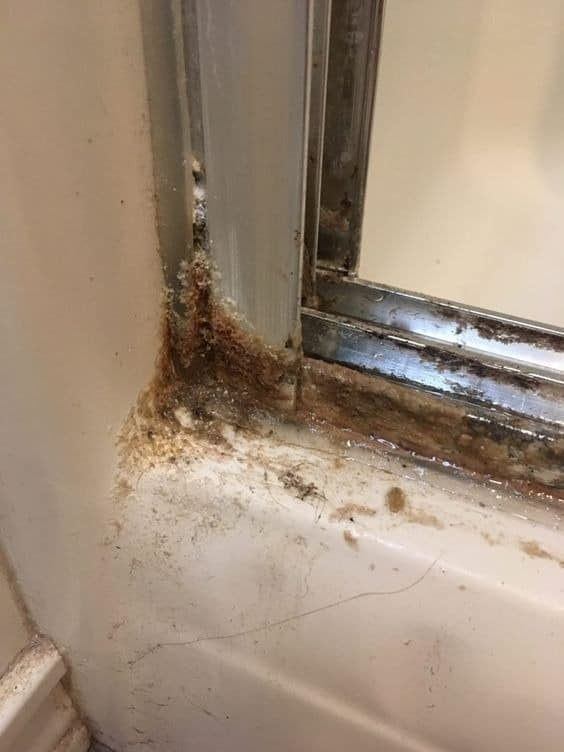ADVERTISEMENT
### **Step-by-Step Guide: How to Clean Your Shower Doors with Baking Soda and Vinegar**
Now that we have everything you need, let’s dive into the step-by-step process of cleaning your shower doors with baking soda and vinegar.
#### **Step 1: Prepare the Vinegar Solution**
The first thing you need to do is create the vinegar solution that will help dissolve soap scum and hard water deposits. To do this, simply pour **1 cup of white vinegar** into a **spray bottle**. You can warm the vinegar in the microwave for about 20 seconds to make it more effective, as heat can help break down mineral deposits faster.
Once the vinegar is in the spray bottle, you’re ready to start!
#### **Step 2: Apply the Vinegar to the Shower Doors**
Next, spray the vinegar generously onto the surface of your shower doors. Focus on areas where you see soap scum, hard water stains, or mineral build-up. These spots tend to appear most frequently at the edges of the glass, on the bottom, and around the door handles.
Let the vinegar sit on the surface for about 5-10 minutes. This gives the acidity of the vinegar time to break down the soap scum and loosen any mineral deposits. If the build-up is particularly heavy, you can let the vinegar sit for longer—up to 15 minutes.
#### **Step 3: Make a Baking Soda Paste**
While the vinegar is working its magic, it’s time to prepare the baking soda paste. In a small bowl, mix **1/2 cup of baking soda** with a small amount of water (about 2-3 tablespoons). Stir the mixture until it forms a thick paste. The paste should be spreadable but not too runny.
Baking soda in paste form is ideal for tackling stubborn stains or areas with heavy soap scum build-up, as it provides some scrubbing power.
#### **Step 4: Apply the Baking Soda Paste**
After the vinegar has had time to sit, it’s time to apply the baking soda paste. Take your **sponge** or **scrub brush**, dip it into the paste, and gently scrub it onto areas with stubborn stains, soap scum, or mineral deposits. You may notice a slight fizzing action where the baking soda meets the vinegar—that’s completely normal and shows that the ingredients are working together.
Pay extra attention to areas with tough build-up, such as the lower parts of the door and the corners, where water often pools.
#### **Step 5: Scrub and Rinse**
After applying the baking soda paste and scrubbing the tough spots, give the entire door a good scrub using your sponge or scrub brush. Focus on the edges, where soap scum and minerals tend to accumulate. Be sure to use gentle, circular motions to avoid scratching the glass.
Once you’ve scrubbed the entire surface, rinse the shower door thoroughly with warm water. The water should help wash away the vinegar and baking soda residue, leaving your door gleaming.
#### **Step 6: Wipe Down the Surface**
Finally, take a **clean cloth** or **paper towel** and dry off the surface of the shower door. This step is important, as it will help prevent new water spots from forming. It also gives your shower doors a streak-free shine.
If your shower door has any remaining mineral deposits or water spots, repeat the process on those areas. For harder-to-remove spots, try soaking a **cloth** in the vinegar solution and laying it over the affected area for 10-15 minutes before scrubbing again.
For Complete Cooking STEPS Please Head On Over To Next Page Or Open button (>) and don’t forget to SHARE with your Facebook friends
